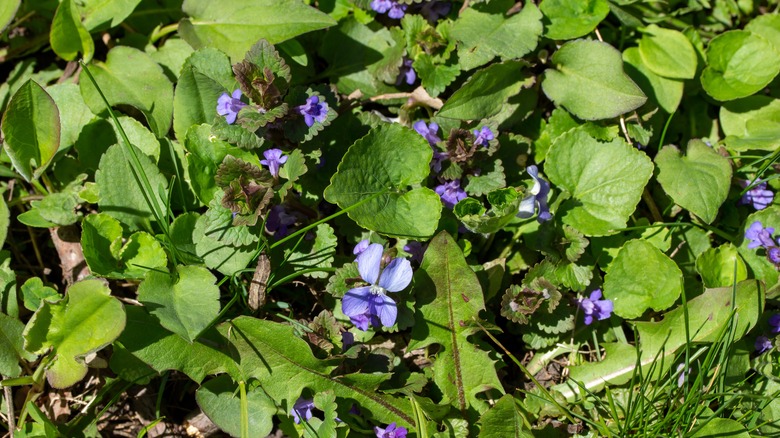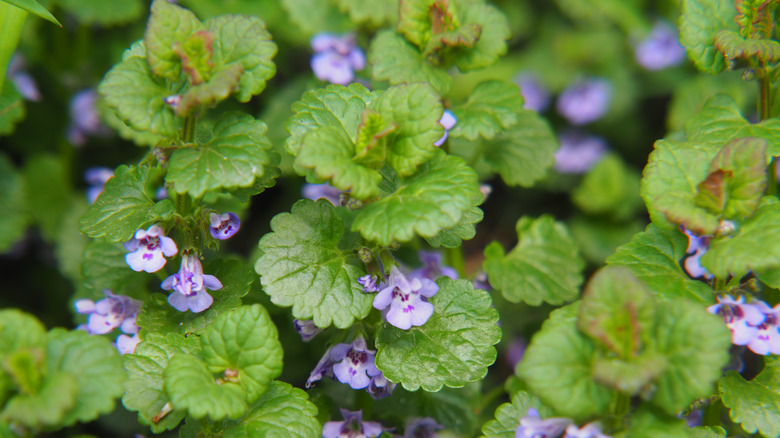Creeping Charlie Or Wild Violet: How To Tell Which Flowering Weed Is In Your Yard
We may receive a commission on purchases made from links.
If you've ever spotted small, flowering plants creeping through your yard or garden, you might be dealing with one of two tricky weeds: creeping Charlie (Glechoma hederacea) or wild violet (Viola sororia). But while they might look similar at first glance, there are actually some key differences that can help you figure out which one is staking its claim in your yard.
Let's start with creeping Charlie. Also known as ground ivy, this perennial weed was originally native to Europe and Asia but is now found all over North America. It loves shady, moist spots and creeps along the ground with vine-like stems. One of the easiest ways to identify creeping Charlie is by its rounded, scalloped-edged leaves that grow in an alternating pattern along the stem. When it blooms, it produces small purple flowers, usually in late spring. But the real giveaway is the plant's creeping nature — it spreads quickly by sending out stolons (horizontal stems) that root at different points, which allows it to create new plants and take over more of your yard.
Now, wild violet is a little different. This one's native to North America, and instead of creeping along the ground, it grows in a clump. The leaves are heart-shaped and grow from a central point, and the flowers are a bit more noticeable than creeping Charlie's — they can be purple, blue, or even white. Like creeping Charlie, wild violets love shady spots, but they can also handle some sunlight. They spread by both seeds and underground rhizomes, which can make it tough to control wild violets in your yard if they get out of hand.
Why it's important to identify the differences
So, why bother figuring out whether it's creeping Charlie or wild violet in your yard? After all, they're both pesky, they both spread quickly, and they're both tough to remove. But knowing which one you've got growing can actually help you tackle the problem more effectively.
To get rid of creeping Charlie in your yard, you're going to need a slightly different strategy. This weed tends to be resistant to a lot of common herbicides. So, if creeping Charlie is your culprit, you'll likely need to use a targeted herbicide that includes something like triclopyr, which is known to work well against it. You can find weed killers with triclopyr at Amazon for $15. And because creeping Charlie spreads through stolons (those horizontal stems), you'll want to be extra careful when pulling it out by hand –- any little piece of stolon left behind can easily root and start the whole cycle again.
Wild violet, on the other hand, doesn't creep in the same way, but it's still a tough nut to crack. This weed can grow in a wider variety of conditions, so you might find it popping up in both shady and sunnier parts of your yard. While triclopyr can also work on wild violet, it has an underground rhizome system that makes it tricky to fully eradicate with herbicides alone. A more hands-on approach -– digging up the plants and their rhizomes –- can be highly effective, though it can take some time and effort. Combining that with herbicide treatments will give you the best chance of getting rid of the weeds for good.

